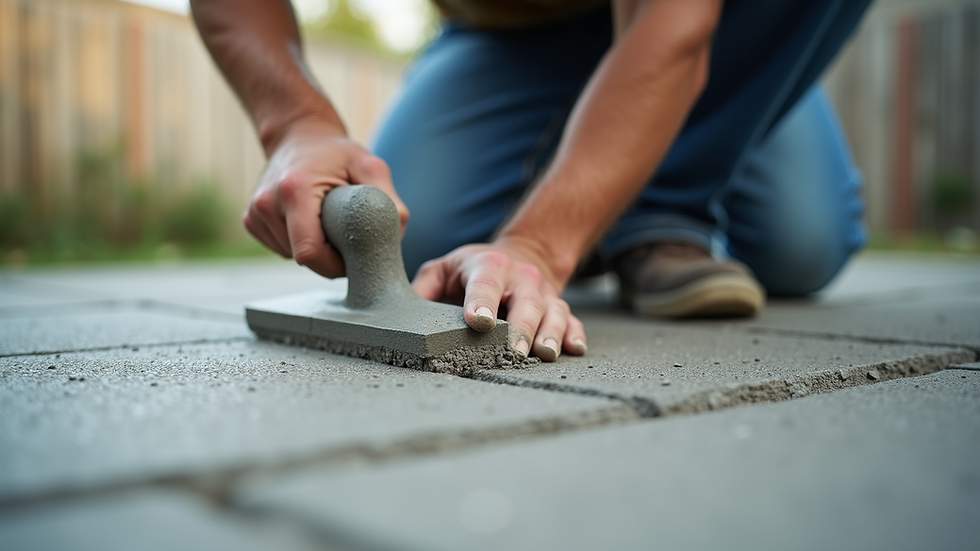Effective Techniques for Concrete Repair
- slabworx8
- Sep 23
- 4 min read
Concrete is everywhere. It forms the foundation of your home, the walkways you use daily, and the parking lots where you park your car. But over time, it cracks, chips, and wears down. You might wonder, "How do I fix this? Can I do it myself? What works best?" I’ve been there, and I want to share what I’ve learned about effective concrete repair techniques that really work.
Why You Need Effective Concrete Repair Techniques
Concrete damage is more than just an eyesore. It can lead to bigger problems if ignored. Cracks let water in, which can freeze and expand in Vermont’s cold winters. This causes more damage and can even affect the structural integrity of your property. You want to stop small issues before they become costly repairs.
Using the right techniques means your repairs last longer. It saves you money and hassle. Plus, it keeps your property safe and looking good. Whether it’s your driveway, sidewalk, or a commercial slab, knowing how to repair concrete properly is key.

Effective Concrete Repair Techniques You Should Know
Let’s get into the nuts and bolts. Here are some proven methods that work well in Vermont’s climate:
1. Cleaning and Preparing the Surface
Before you fix anything, clean the area thoroughly. Remove dirt, debris, and loose concrete. Use a wire brush or pressure washer. This step ensures the repair material sticks well.
2. Filling Small Cracks
For cracks less than 1/4 inch wide, use a concrete crack filler or sealant. These come in tubes and are easy to apply. Just squeeze the filler into the crack and smooth it out. It seals the crack and prevents water from seeping in.
3. Patching Larger Cracks and Holes
For bigger cracks or holes, use a patching compound. Mix it according to the instructions. Apply it with a trowel, pressing firmly to fill the space. Smooth the surface to match the surrounding concrete.
4. Resurfacing
If the concrete surface is rough or pitted but structurally sound, resurfacing is a good option. This involves applying a thin layer of a special concrete overlay. It restores the look and adds a protective layer.
5. Using Epoxy or Polyurethane Injections
For deep cracks that affect the structure, epoxy or polyurethane injections work well. These materials bond the concrete back together and stop water intrusion. This method often requires professional help but is very effective.
6. Sealing the Concrete
After repairs, seal the concrete with a quality sealer. This protects against moisture, chemicals, and wear. It extends the life of your repair and the concrete itself.

What is the best way to repair concrete?
You might ask, "What is the best way to repair concrete?" The answer depends on the damage type and location. But here’s a simple guide:
For small cracks: Use a crack filler or sealant.
For medium cracks and holes: Use a patching compound.
For surface damage: Resurface with an overlay.
For structural cracks: Use epoxy or polyurethane injections.
Always start with cleaning and preparation. Without that, no repair will last. And don’t forget to seal the surface after the repair.
If you want the job done right the first time, consider professional help. They have the tools and experience to assess the damage and choose the best method. Plus, they can handle larger projects safely and efficiently.

Tips for Long-Lasting Concrete Repairs
Here are some tips to make sure your repairs hold up:
Work in the right weather: Avoid very cold or wet days. Vermont’s weather can be tricky, so pick a dry, mild day.
Follow product instructions: Every repair material has specific mixing and curing times. Stick to them.
Use quality materials: Cheap fillers or patches won’t last. Invest in good products.
Maintain your concrete: Clean regularly and reseal every few years.
Address issues early: Don’t wait for cracks to grow or water damage to worsen.
Why Choose Experts for Your Concrete Needs?
Sometimes, DIY just isn’t enough. When you have large cracks, uneven slabs, or structural concerns, you need experts. Professionals know how to diagnose problems and apply the right solutions. They also have access to industrial-grade materials and equipment.
In Vermont, the freeze-thaw cycle is tough on concrete. Experts understand how to work with local conditions. They can recommend the best repair techniques and materials that stand up to the climate.
If you want peace of mind and a job done right, trust the pros. They’ll save you time, money, and headaches in the long run.
Ready to Fix Your Concrete?
If you’re dealing with cracked or damaged concrete, don’t wait. Use these effective concrete repair techniques to get started. Or, if you want expert help, check out concrete repair services that specialize in Vermont’s unique needs.
Your property deserves durable, precise solutions that last. Take action now and protect your investment.
Thanks for reading! If you have questions or want to share your own repair tips, drop a comment below.


Comments